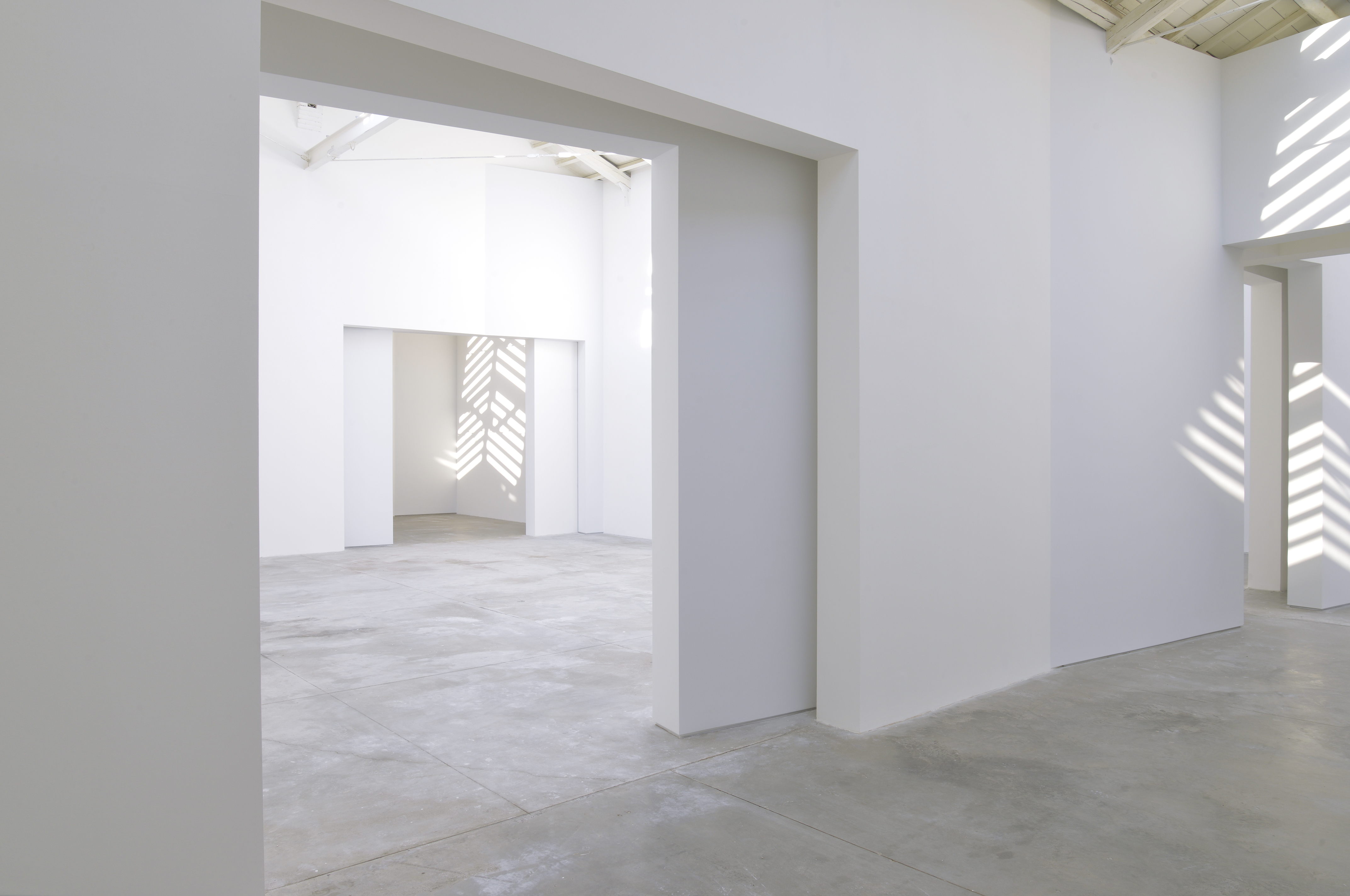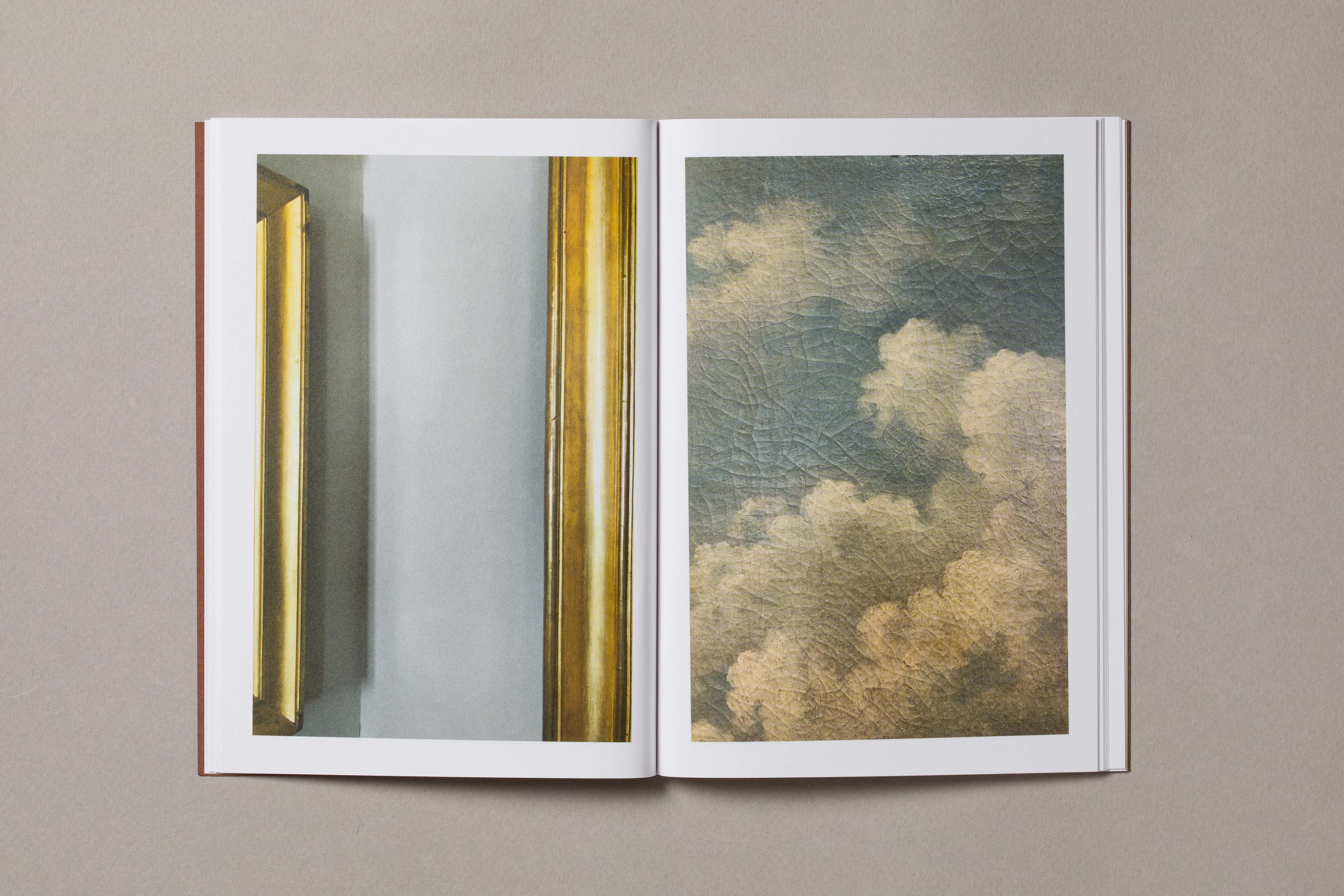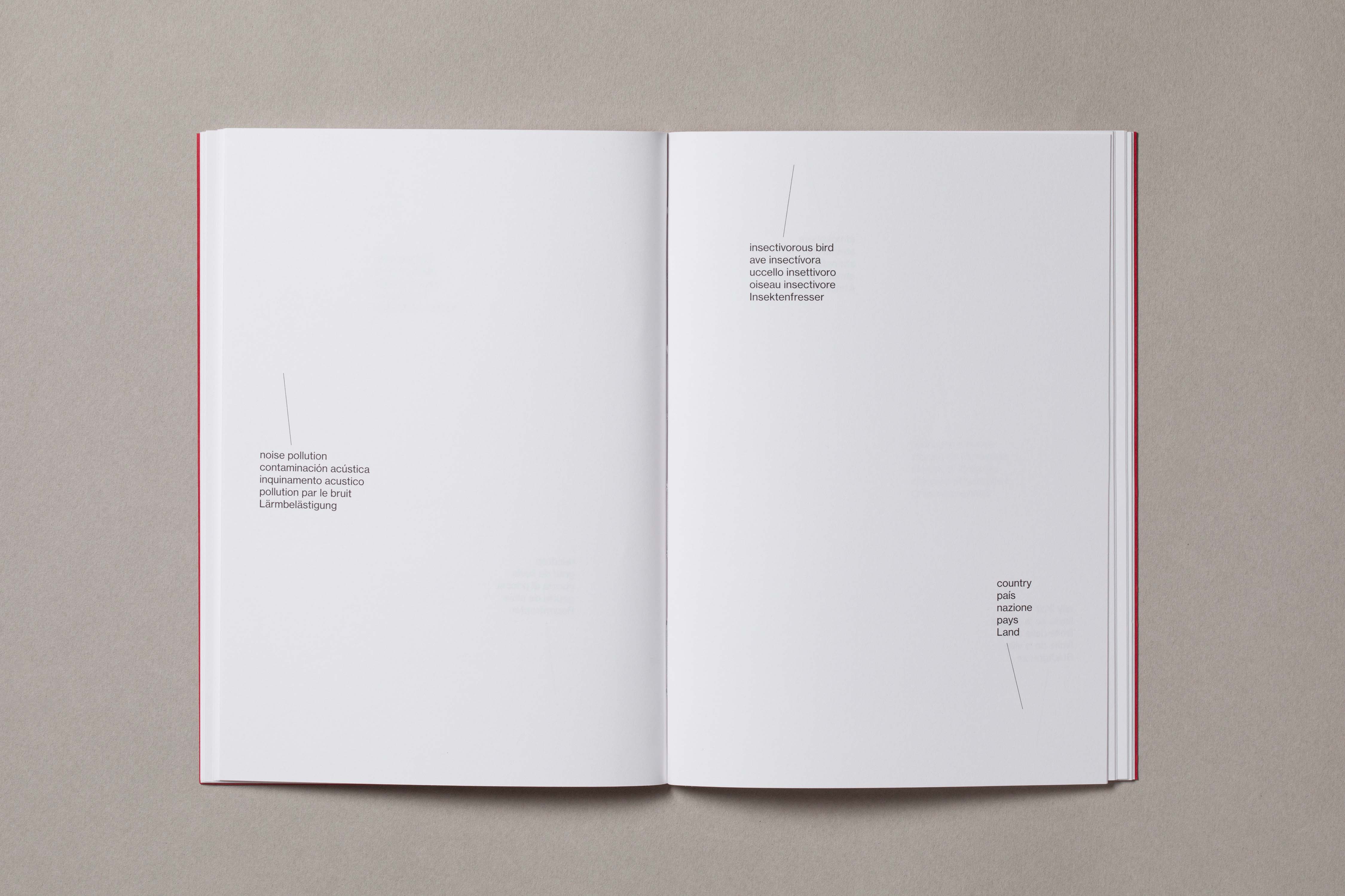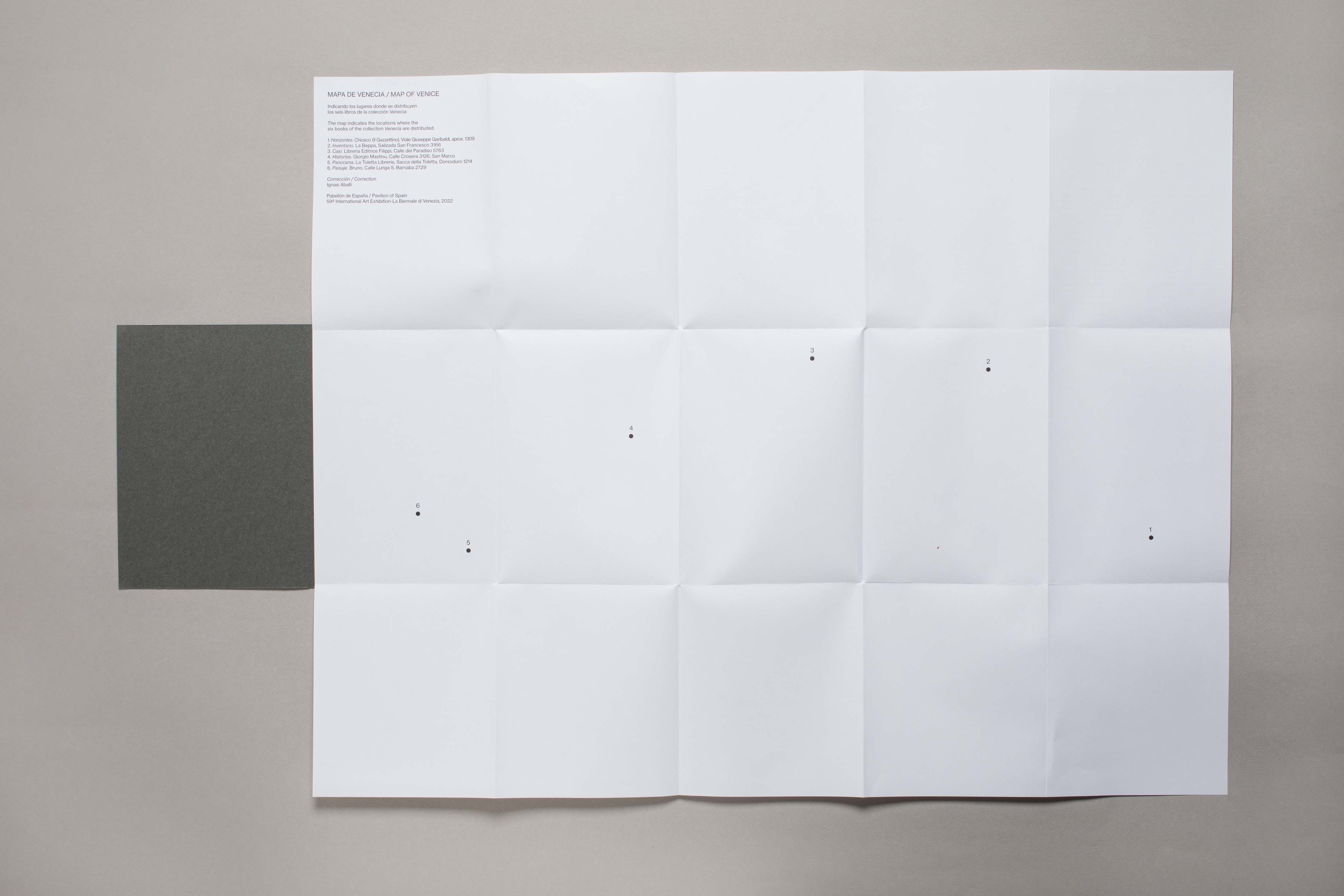Correction
Spanish Pavilion
La Biennale di Venezia 2022
La Biennale di Venezia 2022

The project for the Spanish
Pavilion at La Biennale di Venezia 2022 is, at first sight, straightforward
enough: to shift the pavilion off its axis. Located in a corner of the
Giardini, close to the entrance, the building is slightly skewed with respect
to its neighbours, Belgium and the Netherlands. Tucked away in the corner, it
seems off-kilter. Ignasi Aballí (Barcelona, 1958) stumbled upon this apparent
mistake while studying the floor plans. His proposal endeavours to resolve this
dilemma by building new internal walls, identical in size to the original ones, at an angle of 10
degrees, the required amount to align the building with its neighbours. The
intervention will disrupt spatial memory and will modify the exhibition space,
its location at the Biennale, and its relationship with the city of Venice. Why
correct a pavilion previously validated by someone else? Why compare it with
its neighbours? Why this titanic effort only to end up losing space? This is
where the apparently simple conceit becomes much more complicated.
On one hand, the new architecture draws another image of the Spanish Pavilion and clouds any single unified notion of national representation. On the other, the action of correcting the pavilion exposes the impossibility of the two spaces coexisting without both having to make concessions. At times the original walls are nullified while in other places there is insufficient room for the new ones. As with the architectural walkthrough, a visit to the pavilion is diverted by continuous digressions, by the play of size and scale, presentation and representation, literal versus recreation, simulation in the guise of truthfulness.
In tandem with the shifting of the pavilion, the project is complemented by the publication of six books about Venice that attempt to “correct” what we typically expect from a tourist guide to the city. Aballí identifies another apparent error in relation to the city: Venice is one of the cities that attracts the most visitors in the world and, in turn, it faces serious problems due to mass tourism, pushing it to the brink of collapse. This contradiction drives the artist to view it in a slowed down manner and through the lens of his own artistic practice.
The entire project is a meta-exhibition and at once a dematerialization. It is like an oblique and concealed institutional critique. Like a broken image of Venice. A disjointed idea of Spain.
Bea Espejo
Curator
On one hand, the new architecture draws another image of the Spanish Pavilion and clouds any single unified notion of national representation. On the other, the action of correcting the pavilion exposes the impossibility of the two spaces coexisting without both having to make concessions. At times the original walls are nullified while in other places there is insufficient room for the new ones. As with the architectural walkthrough, a visit to the pavilion is diverted by continuous digressions, by the play of size and scale, presentation and representation, literal versus recreation, simulation in the guise of truthfulness.
In tandem with the shifting of the pavilion, the project is complemented by the publication of six books about Venice that attempt to “correct” what we typically expect from a tourist guide to the city. Aballí identifies another apparent error in relation to the city: Venice is one of the cities that attracts the most visitors in the world and, in turn, it faces serious problems due to mass tourism, pushing it to the brink of collapse. This contradiction drives the artist to view it in a slowed down manner and through the lens of his own artistic practice.
The entire project is a meta-exhibition and at once a dematerialization. It is like an oblique and concealed institutional critique. Like a broken image of Venice. A disjointed idea of Spain.
Bea Espejo
Curator
Press Contact
Mónica Iglesias
info@bystudiomonicaiglesias.com
Information brochure ︎︎︎
General Information
Correction
by Ignasi Aballí
curated by Bea Espejo
Commissioners: Ministerio de Asuntos Exteriores, Unión Europea y Cooperación de España
Organizers: Agencia Española de Cooperación Internacional para el Desarrollo (AECID), Acción Cultural Española (AC/E)
Supporters: Galería Elba Benítez (Madrid), Galerie Nordenhake (Berlin), Meessen De Clercq (Brussels)
Images credit:
(up) Ignasi Aballí, Correction (2022). Installation view of the Spanish Pavilion. Photo: Claudio Franzini. Courtesy of the artist and AECID
(bottom) Ignasi Aballí, Correction (2022). Installation view of the Spanish Pavilion. Photo: Claudio Franzini. Courtesy of the artist and AECID // Ignasi Aballí, Venecia (2022).
Photo: Vicente Paredes. Courtesy of the artist and Caniche Editorial
Mónica Iglesias
info@bystudiomonicaiglesias.com
Information brochure ︎︎︎
General Information
Correction
by Ignasi Aballí
curated by Bea Espejo
Commissioners: Ministerio de Asuntos Exteriores, Unión Europea y Cooperación de España
Organizers: Agencia Española de Cooperación Internacional para el Desarrollo (AECID), Acción Cultural Española (AC/E)
Supporters: Galería Elba Benítez (Madrid), Galerie Nordenhake (Berlin), Meessen De Clercq (Brussels)
Images credit:
(up) Ignasi Aballí, Correction (2022). Installation view of the Spanish Pavilion. Photo: Claudio Franzini. Courtesy of the artist and AECID
(bottom) Ignasi Aballí, Correction (2022). Installation view of the Spanish Pavilion. Photo: Claudio Franzini. Courtesy of the artist and AECID // Ignasi Aballí, Venecia (2022).
Photo: Vicente Paredes. Courtesy of the artist and Caniche Editorial
Correction
Installation views
















Venecia
Collection of books



























